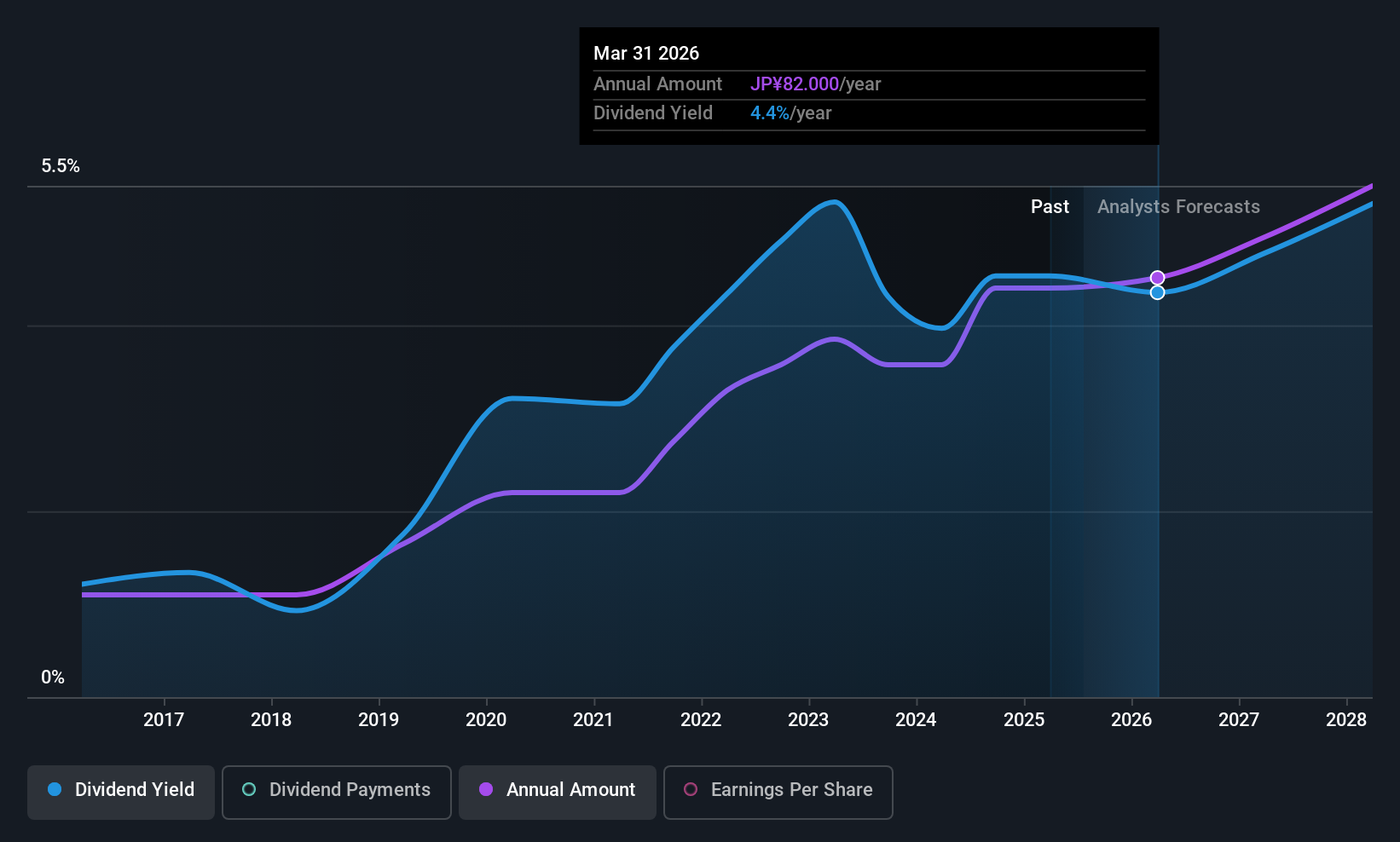Nippon Carbide Industries' (TSE:4064) Upcoming Dividend Will Be Larger Than Last Year's
Nippon Carbide Industries Co., Inc. (TSE:4064) will increase its dividend from last year's comparable payment on the 8th of December to ¥41.00. This will take the dividend yield to an attractive 4.4%, providing a nice boost to shareholder returns.
Nippon Carbide Industries' Projected Earnings Seem Likely To Cover Future Distributions
We like to see robust dividend yields, but that doesn't matter if the payment isn't sustainable. However, Nippon Carbide Industries' earnings easily cover the dividend. As a result, a large proportion of what it earned was being reinvested back into the business.
The next year is set to see EPS grow by 14.9%. If the dividend continues along recent trends, we estimate the payout ratio will be 34%, which is in the range that makes us comfortable with the sustainability of the dividend.

See our latest analysis for Nippon Carbide Industries
Dividend Volatility
While the company has been paying a dividend for a long time, it has cut the dividend at least once in the last 10 years. The dividend has gone from an annual total of ¥20.00 in 2015 to the most recent total annual payment of ¥82.00. This implies that the company grew its distributions at a yearly rate of about 15% over that duration. Nippon Carbide Industries has grown distributions at a rapid rate despite cutting the dividend at least once in the past. Companies that cut once often cut again, so we would be cautious about buying this stock solely for the dividend income.
Dividend Growth May Be Hard To Achieve
Given that the dividend has been cut in the past, we need to check if earnings are growing and if that might lead to stronger dividends in the future. Earnings per share has been crawling upwards at 2.2% per year. While EPS growth is quite low, Nippon Carbide Industries has the option to increase the payout ratio to return more cash to shareholders.
Our Thoughts On Nippon Carbide Industries' Dividend
Overall, this is a reasonable dividend, and it being raised is an added bonus. The dividend has been at reasonable levels historically, but that hasn't translated into a consistent payment. This looks like it could be a good dividend stock going forward, but we would note that the payout ratio has been at higher levels in the past so it could happen again.
Companies possessing a stable dividend policy will likely enjoy greater investor interest than those suffering from a more inconsistent approach. At the same time, there are other factors our readers should be conscious of before pouring capital into a stock. As an example, we've identified 1 warning sign for Nippon Carbide Industries that you should be aware of before investing. If you are a dividend investor, you might also want to look at our curated list of high yield dividend stocks.
Valuation is complex, but we're here to simplify it.
Discover if Nippon Carbide Industries might be undervalued or overvalued with our detailed analysis, featuring fair value estimates, potential risks, dividends, insider trades, and its financial condition.
Access Free AnalysisHave feedback on this article? Concerned about the content? Get in touch with us directly. Alternatively, email editorial-team (at) simplywallst.com.
This article by Simply Wall St is general in nature. We provide commentary based on historical data and analyst forecasts only using an unbiased methodology and our articles are not intended to be financial advice. It does not constitute a recommendation to buy or sell any stock, and does not take account of your objectives, or your financial situation. We aim to bring you long-term focused analysis driven by fundamental data. Note that our analysis may not factor in the latest price-sensitive company announcements or qualitative material. Simply Wall St has no position in any stocks mentioned.
About TSE:4064
Nippon Carbide Industries
Engages in the electronic and functional products, and films and sheetings business in Japan, Asia, and internationally.
Flawless balance sheet with proven track record and pays a dividend.
Market Insights
Community Narratives




